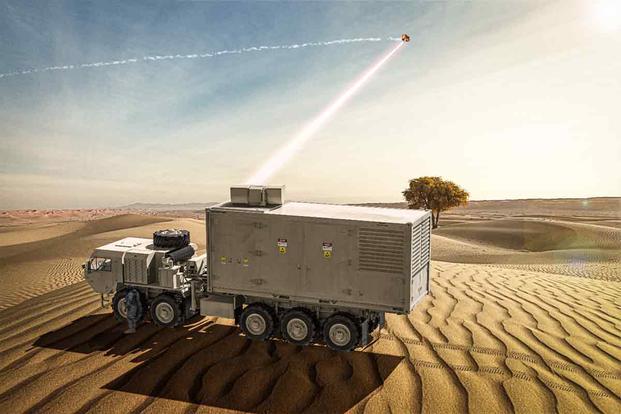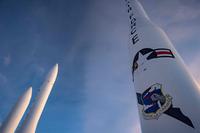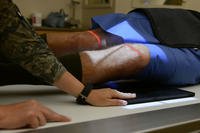The Army has inked a contract with defense giant Lockheed Martin for a platoon's worth of what would be the U.S. military's most powerful laser weapon system to date, the company announced Tuesday.
Developed under the Army's Indirect Fire Protection Capability-High Energy Laser (IFPC-HEL) prototype program and dubbed "Valkyrie," the system can generate lasers at up to 300 kW of power and was designed to offer protection for U.S. troops against incoming unmanned aerial systems, munitions and, most importantly, cruise missiles, according to the service's fiscal 2024 budget request.
The Valkyrie's 300 kW power capacity is a major increase over other laser weapons in the Defense Department's arsenal. For comparison, the Army's Stryker vehicle-mounted Directed Energy Maneuver-Short Range Air Defense (DE M-SHORAD) system, dubbed "Guardian," only reaches 50 kW of power. That's still enough to counter incoming drones, rotary-wing aircraft, and rockets, artillery and mortars (RAM).
Read Next: Two-Star Air Force General Faces Article 32 Hearing on Sexual Assault, Adultery After Being Fired
Similarly, the Navy's High Energy Laser with Integrated Optical-dazzler and Surveillance system, or HELIOS, currently mounted aboard several of the service's Arleigh Burke-class guided missile destroyers, only generates around 60 kW power, just enough to knock out small watercraft but not enough to burn through the nose cones of incoming cruise missiles.
Lockheed Martin will deliver four Valkyrie systems to the Army under the new contract. According to an August 2023 report from the Congressional Research Service, the service expects to take delivery of those systems in the third quarter of fiscal 2025.
In practical terms, the Valkyrie will provide defense against a variety of incoming airborne threats to U.S. troops, from now-ubiquitous drones to fast-moving missiles, ideally with a near-unlimited magazine and intended superior precision and accuracy compared to conventional weapons like a standard-issue M4 carbine.
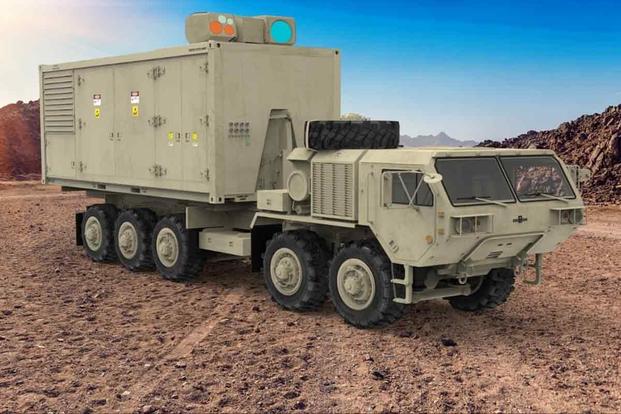
As a result, the Valkyrie is ostensibly the first laser air defense system in the U.S. military's arsenal to potentially offer reliable protection against the types of cruise missiles used by adversaries like Russia and China, concerns over which have fueled increased emphasis (and, in turn, spending) on directed energy weapons for missile defense in recent years.
The Army has requested $85.85 million from Congress for the IFPC-HEL program in fiscal 2024, according to budget documents. The service received $215.34 million for the effort in its fiscal 2023 budget after lawmakers added an additional $40 million in funding to the program.
Lockheed Martin had previously delivered a 300 kW laser system developed under the Pentagon's High Energy Laser Scaling Initiative (HELSI) to the Army in September 2022 for use as an initial IFPC-HEL demonstrator, and the company is currently working under that program to eventually scale to a 500 kW system.
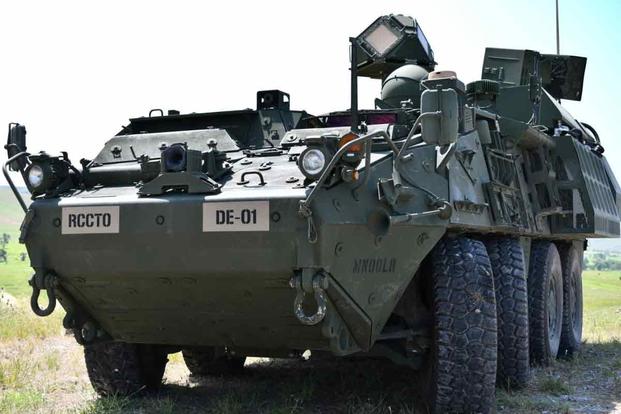
The Army's contract with Lockheed Martin comes as the service pushes forward on the development of laser weapons systems across various platforms. The service fielded a platoon of four laser-toting DE M-SHORAD Strykers in September and reportedly plans on affixing a 20 kW laser weapon on its new Infantry Squad Vehicle (ISV) assault buggy.
Currently, the Army's myriad laser systems aren't just getting a workout at testing ranges across the United States. In August, Army Maj. Gen. Sean Gainey, director of the Joint Counter-Small Unmanned Aircraft Systems Office, revealed that the service had deployed unspecified 10 kW laser systems to U.S. Central Command, U.S. Africa Command and U.S. Indo-Pacific Command areas of responsibility for "operational assessments," as Breaking Defense reported at the time.
But despite the tactical benefits offered by mobile laser systems, recent operational testing has revealed a major challenge to their widespread adoption: Namely, they're a pain for soldiers to maintain in remote and austere locations, as Gainey told reporters at the time.
"[From a] training perspective and an organization perspective, things are proceeding relatively quickly," Gainey said of the Army's laser efforts. "But it's the sustaining aspect that we have to do better if we want to scale this across the force."
-- Jared Keller can be reached at Jared.Keller@military.com.
Related: 50-Kilowatt Laser Will Be a 'Game-Changer,' Company Says
